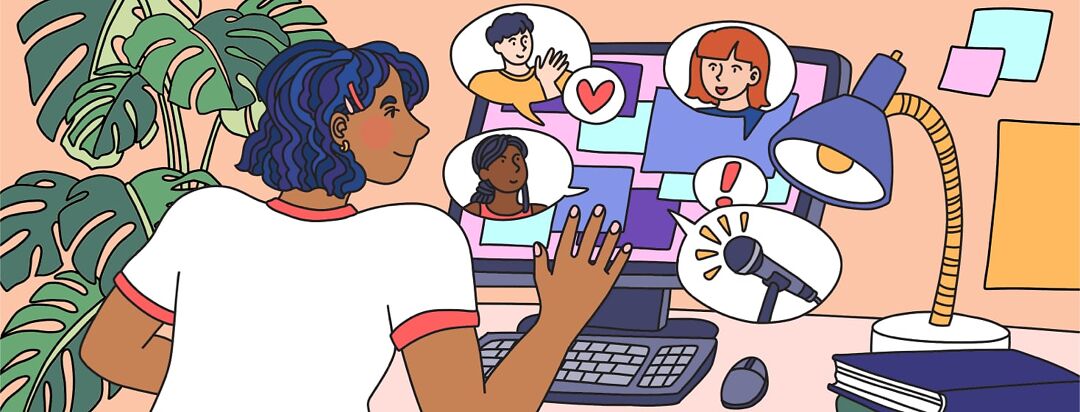Reclaiming Life With Myasthenia Gravis: Services That Have Helped Me Cope
Living with Myasthenia Gravis (MG) is a bumpy journey that has tested my physical and emotional resilience. Gradually, I have found valuable resources such as therapy, chronic illness coaching, social media, and online support groups that have greatly improved my coping ability and confidence to face the sometimes unforeseeable challenges that come with MG.
In this article, I want to share the advantageous services that helped me get my life back on track after my MG diagnosis.
Therapy
Therapy has really helped me deal with the emotional ups and downs and the extra anxiety I've been dealing with since my MG diagnosis. Initially, I attended in-person therapy sessions, but the bright lights in the therapy room aggravated my light sensitivity, and I also did not have proper neck support on the sofa.
Additionally, my nervousness during face-to-face interactions with my therapist led to speech difficulties, including stuttering and challenges in forming words and speaking clearly. I eventually decided that online sessions were a better fit for me, and it has made therapy a lot more approachable and something I look forward to every week.
Chronic illness coach
During a stressful time after college graduation, six months post-diagnosis, I came across a chronic illness life coach on social media, and I decided to invest in their three-month program.
Working with the coach changed my life's direction and how I was thinking back then. They gave me personalized advice that helped me accept my new situation and set realistic goals for my health, emotional well-being, and future plans. I learned mindfulness practices, stress management techniques, and self-care routines. The regular calls kept me accountable and motivated, and even since the end of the program, they continue to offer support throughout my journey.
Social media
Social media helped me come to terms with my new life with MG early on and make the most of it. It comforts me when I connect with others dealing with MG who understand what I'm going through. Others have shared some really helpful advice and offered a lot of support.
Plus, talking with healthcare pros, researchers, and support organizations keeps me in the loop about the latest updates and news. These online spaces also highlight events like webinars and conferences that continue to help me learn about MG.
Education programs
Workshops, seminars, webinars, and conferences on Myasthenia Gravis provide valuable insights into coping strategies and the latest research updates. One of my favorites was the Annual Myasthenia Gravis Foundation of America (MGFA) Conference, which I attended via an online video option. I look forward to attending again, as the event offered an engaging mix of clinical discussions, patient questions, recent research findings, new therapies, and coping mechanisms.
The MGFA also hosts webinars that I find very informative. I often register to attend these live sessions so I can ask questions. However, they do share recordings of past webinars on their YouTube channel.
Telehealth
Virtual appointments with my MG specialist have been convenient. While my doctor prefers in-person visits for a more observable assessment of my condition, they often accommodate me by providing video call appointments. This is especially helpful since I live far from their office and prefer to avoid doctor's offices whenever possible to reduce the risk of getting sick.
Support groups
I really enjoyed participating in online video support groups for a while. I tried out several and eventually stuck with one that included about five other young adults with Myasthenia Gravis (MG). The size of our group allowed everyone to feel heard, share their thoughts, and encourage one another.
However, as time went on, the energy in the group shifted, and I no longer felt it was helping me in my journey with MG. I haven't attended a support group in a while. Still, they were essential in supporting me during my first couple of years living with MG.
Massage
After my transsternal thymectomy, I experienced significant pain in my shoulders, neck, sides of my torso, and back for several months. I found a lot of relief through professional massages. Although many massages can be expensive, I kept an eye out for promotional offers and primarily focused on Groupon options.
I consulted with my surgeon first and began getting massages six months after my surgery, as I was too limited in my movements before that time. I communicated my limitations clearly to the masseuse, and we found ways to work around what was comfortable for me.
Grocery delivery
During the COVID-19 pandemic, I discovered the benefits of grocery delivery services. They helped me avoid exposure to others, reducing my risk of illness. Even without the pandemic, I would have chosen grocery delivery due to my weakness in lifting items and pushing carts. This service saved my limited energy as well.
The downsides were issues with the quality of fruits and vegetables and missing items in most orders. Eventually, I switched to a customized grocery platform, which improved my experience as I rarely had problems with my orders.
Utilizing services to enhance my quality of life with MG
Navigating life with Myasthenia Gravis can be a continually shifting journey. The services I have used, from therapy and chronic illness coaching to massages and grocery delivery, have enhanced my quality of life and emotional health. Each has uniquely contributed to helping me adapt to my diagnosis and reclaim control of my life.
While the journey may be challenging, the resources we have at our disposal can allow for some ease along the way, empowering us to navigate the road ahead with stability and hope.

Join the conversation